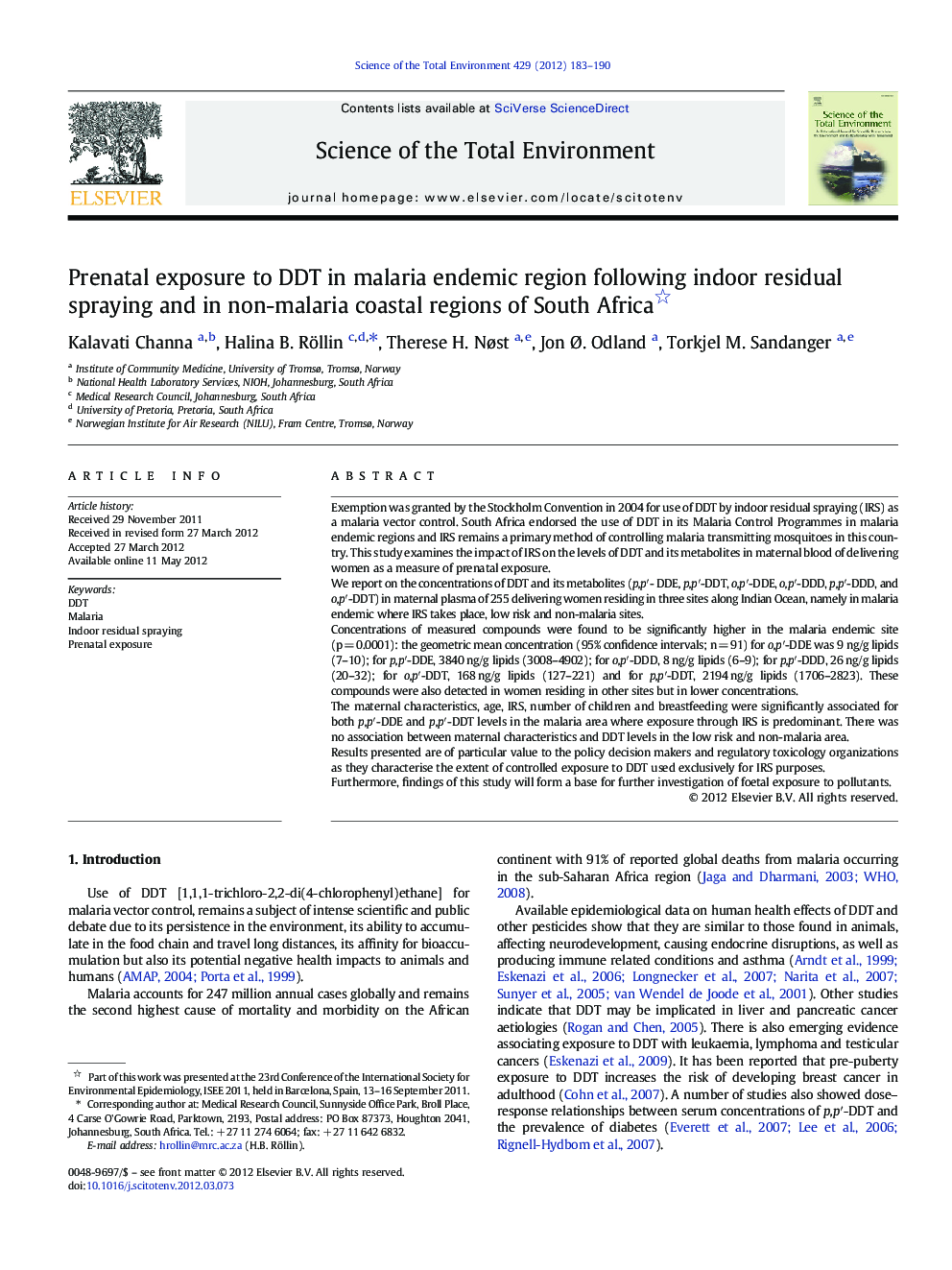| Article ID | Journal | Published Year | Pages | File Type |
|---|---|---|---|---|
| 4429380 | Science of The Total Environment | 2012 | 8 Pages |
Exemption was granted by the Stockholm Convention in 2004 for use of DDT by indoor residual spraying (IRS) as a malaria vector control. South Africa endorsed the use of DDT in its Malaria Control Programmes in malaria endemic regions and IRS remains a primary method of controlling malaria transmitting mosquitoes in this country. This study examines the impact of IRS on the levels of DDT and its metabolites in maternal blood of delivering women as a measure of prenatal exposure.We report on the concentrations of DDT and its metabolites (p,p′- DDE, p,p′-DDT, o,p′-DDE, o,p′-DDD, p,p′-DDD, and o,p′-DDT) in maternal plasma of 255 delivering women residing in three sites along Indian Ocean, namely in malaria endemic where IRS takes place, low risk and non-malaria sites.Concentrations of measured compounds were found to be significantly higher in the malaria endemic site (p = 0.0001): the geometric mean concentration (95% confidence intervals; n = 91) for o,p′-DDE was 9 ng/g lipids (7–10); for p,p′-DDE, 3840 ng/g lipids (3008–4902); for o,p′-DDD, 8 ng/g lipids (6–9); for p,p′-DDD, 26 ng/g lipids (20–32); for o,p′-DDT, 168 ng/g lipids (127–221) and for p,p′-DDT, 2194 ng/g lipids (1706–2823). These compounds were also detected in women residing in other sites but in lower concentrations.The maternal characteristics, age, IRS, number of children and breastfeeding were significantly associated for both p,p′-DDE and p,p′-DDT levels in the malaria area where exposure through IRS is predominant. There was no association between maternal characteristics and DDT levels in the low risk and non-malaria area.Results presented are of particular value to the policy decision makers and regulatory toxicology organizations as they characterise the extent of controlled exposure to DDT used exclusively for IRS purposes.Furthermore, findings of this study will form a base for further investigation of foetal exposure to pollutants.
► We examined impact of indoor residual spraying (IRS) with DDT on prenatal exposure. ► Concentrations of DDTs in maternal plasma at delivery were found to be high. ► These findings are of concern and follow up studies should be performed. ► Results are of value to regulatory agencies involved in eradication of malaria.
